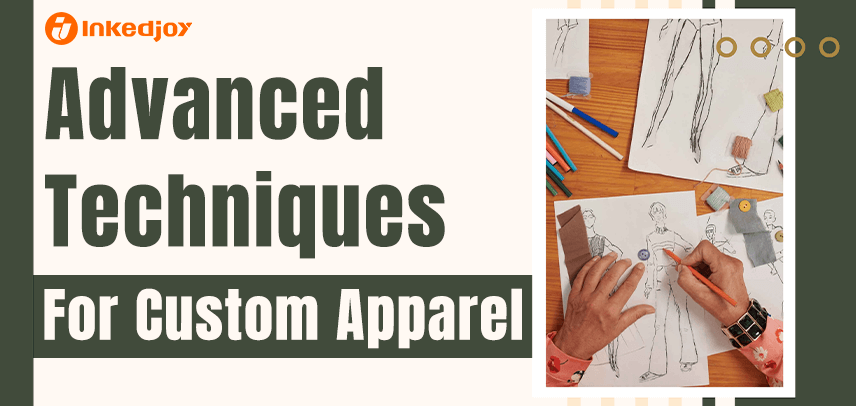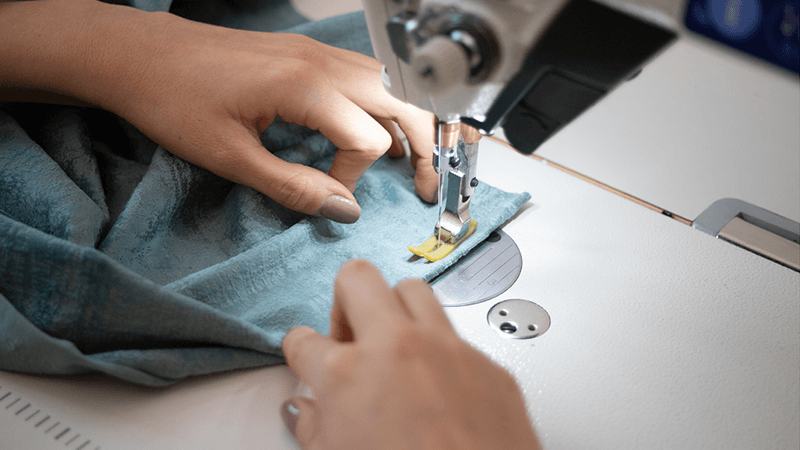
Advanced Techniques for Subtle and Stylish Custom Apparel
Custom apparel is moving past the big, flashy logo. For years, slapping a brand on a t-shirt was enough, but now, people want something with more style and personality. It's no longer about making a walking billboard; it's about creating a genuinely cool piece of clothing.
This shift comes from a focus on the small things—the feel of the print, the texture of the stitching, and clever design placement. These are the details that turn a basic garment into something you'll actually want to wear.
A Softer Feel with Better Ink
Most custom tees are made with plastisol ink, a plastic-based ink that creates a thick, rubbery layer on top of the shirt. It's bright and tough, but you can always feel it. For a much softer, higher-end feel, better printing methods work the ink directly into the fabric.
Discharge printing, for example, is a great option for dark, 100% cotton shirts. It uses a water-based ink that removes the shirt's dye and replaces it with new color. The final print has almost no feel to it because the design is now part of the fabric itself, often with a cool, slightly vintage look.
For lighter-colored garments, standard water-based inks provide a similar benefit. They soak into the fibers, resulting in a soft, breathable print that doesn't crack or peel and moves with the fabric.
These professional methods are surprisingly accessible through modern (POD) print on demand companies. Services like Inkedjoy give independent creators access to the same ink technologies used by major retail brands, making it possible to get that high-end finish on any order size.
Adding Texture with Stitching
Printing isn't the only way to go. Stitching adds a layer of texture and quality that immediately makes a garment with stitching printing feel more expensive. Embroidery and appliqué are two classic techniques that communicate a higher level of craftsmanship.
Embroidery is the traditional choice for a reason. A stitched design has a physical presence—a raised texture and a slight sheen that catches the light. But instead of big, loud designs, the trend is toward smaller, smarter details.
Tonal embroidery, which uses thread just a shade different from the fabric, adds a subtle, ghost-like effect. Another great move is micro-embroidery—a tiny symbol on a cuff or collar that acts as a quiet, stylish signature.
Appliqué takes texture even further by layering pieces of fabric onto a garment and stitching them in place. It's perfect for creating a dimensional, handcrafted look, especially with simple shapes or letters. Whether the edges are cleanly stitched or left raw to fray over time, appliqué adds a tactile character that printing can't match.

Smart Placement for Modern Style
The location of your design can make or break the final look. Moving away from the standard center-chest placement is one of the easiest ways to make your apparel feel more like a piece from a boutique than a promotional giveaway.
When you put the design somewhere unexpected, it becomes an integrated part of the garment, not just something stuck on top.And this is personalized apparel.
A few creative placements can make all the difference:
- The Sleeve Cuff: A small icon or word just above the cuff on a long-sleeve is a classic, low-key touch.
- The Back Yoke: A design just below the back collar offers a clean, premium look that's visible when not wearing a jacket.
- The Side Seam: A design running vertically along the side, or a tag sewn in, adds a flash of detail that appears with movement.
- The Bottom Hem: A small logo near the bottom hem feels much more intentional and less like an advertisement.
Finishing Touches Make the Difference
The final details are what truly set premium apparel apart. These small touches signal quality and turn a good piece of clothing into a great one. Relabeling is a perfect example. By removing the manufacturer's stock tag and adding your own, you instantly elevate your brand. You just need to find the best white label product for you to sell.
Another powerful detail is a hem tag. This small, folded label is usually stitched onto the bottom hem of a shirt or the edge of a beanie. It's a subtle way to place your brand on the outside of the garment without being loud.
These finishing touches used to be out of reach without ordering in bulk, but that's changed. The print on demand model makes it easy to add professional details like custom tags. A partner like Inkedjoy can handle these elements, helping you create a product that looks and feels polished and complete, right from the first order.
Crafting a Signature Style
In the end, creating standout custom apparel is less about shouting your brand and more about showing your style. It's the difference between a shirt that feels like a uniform and one that feels like a favorite piece in a wardrobe. By focusing on higher-quality printing, thoughtful stitching, and clever design details, you can make clothing that doesn't just carry a logo—it has a personality.



